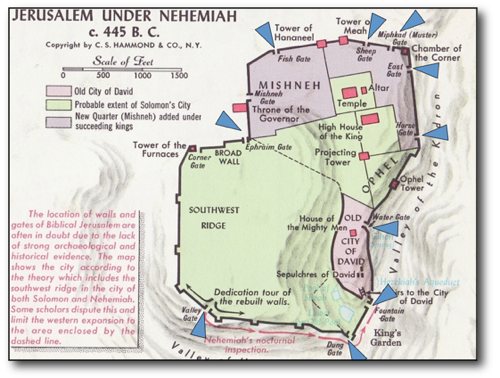Blacknbengal
Well-Known Member
The 10 Gates of Jerusalem that was rebuilt in Nehemiah have spiritual meaning. Just wanted to share with you all some of my studies.

http://www.jesusplusnothing.com/studies/online/nehem3.htm
The gates of spiritual progression
3:1-8: ‘Then Eliashib the high priest arose with his brothers the priests and built the Sheep Gate; they consecrated it and hung its doors… Now the sons of Hassenaah built the Fish Gate; they laid its beams and hung its doors with its bolts and bars. And next to them Meremoth the son of Uriah the son of Hakkoz made repairs. And next to him Meshullam the son of Berechiah the son of Meshezabel made repairs… And Joiada the son of Paseah and Meshullam the son of Besodeiah repaired the Old Gate; they laid its beams and hung its doors, with its bolts and its bars… And next to him Hananiah, one of the perfumers, made repairs, and they restored Jerusalem as far as the Broad Wall.’

http://www.jesusplusnothing.com/studies/online/nehem3.htm


